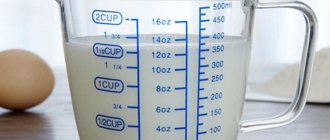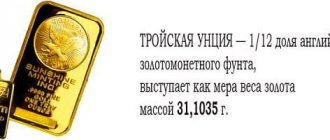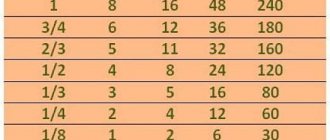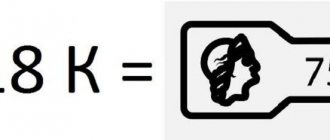In various sources translated into Russian, you can often find mention of an ounce. It is a unit of mass, weight or volume used in most British traditional systems of measurement. A typical ounce of avoirdupois (approximately 28.3 g) is 1/16 of the total weight of a pound.
This is a classic unit of measurement for the USA and Britain. It is mainly used in the United States of America for weighing packaged foods and portions, postal items, as well as for determining the density of fabric and paper, boxing gloves, etc. It can sometimes be found in the English-speaking sphere for other processes.
You will be interested: General Berezin Alexander Dmitrievich: biography, military service, memory
Varieties
In addition to the regular one, several other ounces are currently in use. These can be measurements of different quantities. This unit is used not only to clarify weight. It is used in the following cases:
- A troy ounce, weighing about 31.1 grams, is used to determine the mass of precious metals such as gold, silver, platinum, palladium, rhodium, etc.
- Ounce-force is a measure of weight, that is, mass.
- Fluid ounce is a measure of volume.
Historically, it was used in many industries in various fields where it was necessary to measure mass or volume.
How to convert a troy ounce into the usual grams of gold or silver?
The mass of a troy or gold coin pound is 373.2417 grams.
1/12 of it or 31.1034768 grams is a troy ounce.
This value is too precise. In practice, they use its abbreviated version 31.1035. Thus, 1 kilogram of gold or silver contains 32.1507 troy ounces of the precious metal.
To convert this international value into grams, it is enough to multiply the weight value represented in it by 31.1035. The reverse conversion to ounces is carried out by dividing the mass value by the same number.
To make calculations easier on the Internet, there are many special online converters that will quickly and easily perform all the calculations for you.
Etymology of the name
You may be interested in: Division of multi-digit numbers: types, rules, properties and examples of solutions
Where does the term "ounce" come from? This name comes from the Latin uncia, a unit that was one twelfth of the Roman pound (a measure of weight).
The name was borrowed twice. Old English was first spoken as "insan" or "indsan" (a corrupted form of Latin). Then the word "ounce" began to be used in late medieval English.
The abbreviation oz came later from the related Italian word onza (now spelled oncia).
How many kg are in a pound, ounce and spool - history of the issue
To clarify the question of how many kg are in a pound, as well as where the name “pound” came from, we will have to go to ancient Rome.
In Rome, two names were used to denote light weight. The word "libra" was used to denote the mass of precious metals and already minted coins. The weight of other substances was measured in pounds. Let's take a closer look at each of the designations and find out how many kilograms, grams and ounces are in a pound.
Most of us probably have the first association with the word “pound” as “pound sterling”. Obviously, we are unlikely to find the answer to the question “how many kg in one pound” here, but this is the expression we encounter most often in everyday life, and it is unfair to deprive it of attention.
The pound sterling is still the monetary unit of Great Britain and some of its former colonies and is denoted by the Latin letter L. It is easy to guess that this is so, because the name comes from the Latin name for the unit of weight “libra”. As already mentioned, in the Roman Empire the libra was used to indicate weight, mainly of precious metals. The libra was equal to 327.45 grams and consisted of 12 ounces, each of which in turn was approximately 27 grams.
Ounces are still in use. They range from 28 (fluid ounce) to 31 grams - this is the so-called “troy ounce”. The latter is used by jewelers and bank employees. The fluid ounce is still in demand among pharmacists and food manufacturers.
The pound sterling was originally made up of one libra of pure silver coins.
Then, with the development of the monetary system, banknotes and coins appeared that had nothing to do with the amount of silver that went into their production. The memory of the Roman source remains only in the form of a designation - the Latin letter L.
In Rus', a spool was attached to the libra. Probably everyone has heard the saying that the spool is small, but expensive. Indeed, the spool was small and equal to approximately 4 grams of gold or 1/96 libra. This was also the name of a small gold coin of Kievan Rus.
The pound is another Roman unit of weight used to determine the mass of all other substances. And the answer to the question “how many kg are in a pound” should be addressed specifically to her.
In Rome, a pound, like a libra, was equal to 327 grams. But in medieval Europe, in every more or less significant region, the rulers had the right to set the value of the pound at their own discretion. And it should be noted that they actively used this right, extracting maximum benefit for themselves from the answer to the question “how many kg are in a pound”.
In Europe at the end of the eighteenth century there were at least 100 different pounds. Their meanings differed quite greatly from each other. For example, the Austrian pound was equal to 560 grams, and the Spanish pound was 450. The French pound, called “livre,” was equal to 490 grams and, like the English pound sterling, was originally used to indicate the weight of silver coins. In Russia, the pound was equal to 409 grams, and its standard was created by D.I. himself. Mendeleev.
It is quite obvious that such a variety of designations for weight measures created a lot of inconvenience. Therefore, the metric system, with its kilograms and grams, was an excellent way out of the situation.
But it would be unfair to forget the pound. Therefore, now, after the adoption of the metric system, we can say with absolute certainty how many kg are in a pound. Today, a pound is equivalent to 500 grams by default.
Why is there no single standard
An ounce is a unit that is measured in different ways. The explanation for this is as follows. It has been used historically in many parts of the world, at different points in history, and for different applications. Therefore, unequal mass standards were taken as a basis.
How much does an ounce weigh in different values? The international version of avoirdupois calls 28.349523125 437.5 grams. An international troy ounce is 31.1034768 480 grams, a French ounce is 30.59 grams. There are other numerical values. It is worth learning more about what types of this unit of measurement are used in the modern world.
International avoirdupois system (oz)
An international ounce is 28.349523125 grams, according to the International Yard and Pound Agreement of 1959. It was signed by the United States of America and the countries of the Commonwealth of Nations.
In the avoirdupois system, sixteen ounces equal a pound with the same name. It is defined as follows: 7000 grains. Therefore, one ounce totals 437.5 grains.
It is still the standard unit of weight in the United States. In the UK it ceased to be a legal unit of measurement in 2000, but is still widely used on an informal basis. It is also the traditional measure of portion sizes in British restaurants.
International troy ounce (ozt)
This unit of measurement is 480 grains. Therefore, a troy unit is equal to 31.1034768 grams. There are 12 troy ounces in the now obsolete pound of the same name.
Today this measure is used only to express the mass of precious metals such as gold, platinum, palladium, rhodium or silver. Bullion coins are the most common product produced and sold in troy ounces. However, precious metal bars also exist in grams and kilograms.
What is the ounce weight of these items? A kilogram bar contains 32.15074657 troy ounces. Throughout history, this measure was actively used to weigh gold. It has the following classification:
- Fine is a troy ounce that measures the pure gold content of a bar. It is calculated as follows: sample multiplied by gross weight.
- The standard is a measure of 22 carat gold with a purity of 91.66% (the proportion of precious metal to alloy is 11: 1).
Pounds to Ounces Calculator
You are converting pounds to ounces.
Calculator - Weight and Mass - Pounds to Ounces
How many ounces are in pounds - convert pounds to oz
1 Pound (lb) = 16 Ounces (oz)
Pounds The pound or pound-mass (abbreviations: “lb”, “lbm”, “lbm”) is a unit of mass that has several definitions. Today, the most commonly used currency is the international avoirdupois pound, which is defined as 0.45359237 kilograms. A pound is equal to 16 ounces.
Ounces An ounce (abbreviation: "oz") is a unit of mass that has several definitions. Often an ounce is equal to 28 grams. Its size may vary in different systems. Today, the most widely used international ounces are avoirdupois, equal to 28.3495231 grams, and troy ounces, equal to 31.1034768 grams.
Conversion of units of Weight and Mass
Convert from
Convert to
lb
=
oz
| Basic units of weight | |
| Carat | car |
| Gram | gr |
| Kilogram | kg |
| Milligram | mg |
| Ounce | oz |
| Lb | lb |
| Ton | T |
| Other units of mass | |
| Assarion | assarion |
| Atomic mass unit (Dalton) | A. eat. |
| Attogram | ag |
| Bekah | |
| Centigram | cg |
| Dalton | |
| Dg | dg |
| Dekagram | dag |
| Denarius | denarius |
| Didrachm | didrachma |
| Drachma | drachma |
| Dina | dyn |
| Exagram | Eg |
| Femtogram | fg |
| Hera | gerah |
| Gigagram | Gg |
| Grain | gr |
| Hectogram | hg |
| Hundredweight | cwt |
| Hundredweight(UK) | cwt |
| Kip | |
| Mite | lepton |
| Megagram | Mg |
| Microgram | µg |
| Mine | mina |
| Mina(Biblical Hebrew) | mina |
| Nanogram | ng |
| Pennyweight | pwt |
| Petagram | Pg |
| Picagram | pg |
| Poundal | pdl |
| Quadrant | quadrans |
| Quarter | |
| Quarter(UK) | quarter |
| Quintal | quint. |
| Scruple | scr |
| Shekel | shekel |
| Slug | |
| Stone | st |
| Stone(UK) | st |
| Talent(Greek) | |
| Talent(Hebrew) | |
| Teragram | Tg |
| Tetradrachm | tetradrachma |
| Ton | |
| English ton | |
| Troy ounce | |
| Pharmacist's pound | |
| Basic units of weight | |
| Carat | car |
| Gram | gr |
| Kilogram | kg |
| Milligram | mg |
| Ounce | oz |
| Lb | lb |
| Ton | T |
| Other units of mass | |
| Assarion | assarion |
| Atomic mass unit (Dalton) | A. eat. |
| Attogram | ag |
| Bekah | |
| Centigram | cg |
| Dalton | |
| Dg | dg |
| Dekagram | dag |
| Denarius | denarius |
| Didrachm | didrachma |
| Drachma | drachma |
| Dina | dyn |
| Exagram | Eg |
| Femtogram | fg |
| Hera | gerah |
| Gigagram | Gg |
| Grain | gr |
| Hectogram | hg |
| Hundredweight | cwt |
| Hundredweight(UK) | cwt |
| Kip | |
| Mite | lepton |
| Megagram | Mg |
| Microgram | µg |
| Mine | mina |
| Mina(Biblical Hebrew) | mina |
| Nanogram | ng |
| Pennyweight | pwt |
| Petagram | Pg |
| Picagram | pg |
| Poundal | pdl |
| Quadrant | quadrans |
| Quarter | |
| Quarter(UK) | quarter |
| Quintal | quint. |
| Scruple | scr |
| Shekel | shekel |
| Slug | |
| Stone | st |
| Stone(UK) | st |
| Talent(Greek) | |
| Talent(Hebrew) | |
| Teragram | Tg |
| Tetradrachm | tetradrachma |
| Ton | |
| English ton | |
| Troy ounce | |
| Pharmacist's pound | |
Conversion result:
Other popular mass and weight calculators
- Carat to Gram
- Carat to Kilogram
- Carat to Milligram
- Carats to Ounces
- Carat to Pound
- Carats to Tons
- Gram to Carat
- Gram to Kilogram
- Gram to Milligram
- Gram to Ounce
- Gram to Pound
- Grams to Tons
- Kilogram to Carats
- Kilograms to Grams
- Kilogram to Milligram
- Kilograms to Ounces
- Kilogram to Pounds
- Kilogram to Tons
- Milligram to Carat
- Milligram to Gram
- Milligram to Kilogram
- Milligram to Ounce
- Milligrams to Pounds
- Milligrams to Tons
- Ounce to Carats
- Ounce to Gram
- Ounce to Kilogram
- Ounce to Milligram
- Ounce to Pound
- Ounce to Ton
- Pound to Carat
- Pound to Gram
- Pound to Kilogram
- Pound to Milligram
- Pound to Ounce
- Pound to Tons
- Ton to Grams
- Ton to Kilos
- Ton to Milligrams
- Ton to Ounces
- Ton to Pounds
Metric ounces
Some countries have revised these units to the metric system. Therefore, the question of how many grams are in an ounce will have different answers. This depends on the country of application. For example, the German apothecary ounce weighing 30 grams is very close to the previously widespread Nuremberg one. However, its divisions and multiples are expressed in the metric system.
In 1820, the Dutch redefined their ounce (in that country its abbreviation is ons). In the Netherlands it is 100 grams. Such amendments to the metric system were also adopted and used in Indonesia. In particular, they are studied according to the general education curriculum of primary schools. This measure is also mentioned in the Indonesian national dictionary.
Units
Kilogram
In the SI system, mass is expressed in kilograms. The kilogram is determined based on the exact numerical value of Planck's constant h
, equal to 6.62607015×10⁻³⁴, expressed in J s, which is equal to kg m² s⁻¹, with the second and meter being determined by the exact values of
c
and Δ
ν
Cs. The mass of one liter of water can be approximately considered equal to one kilogram. The derivatives of kilogram, gram (1/1000 of a kilogram) and ton (1000 kilograms) are not SI units, but are widely used.
Electron-volt
Electronvolt is a unit for measuring energy. It is usually used in the theory of relativity, and energy is calculated using the formula E
=
mc²
, where
E
is energy,
m
is mass, and
c
is the speed of light.
According to the principle of equivalence of mass and energy, an electronvolt is also a unit of mass in the system of natural units, where c
is equal to one, which means mass equals energy. Electrovolts are mainly used in nuclear and atomic physics.
Atomic mass unit
Atomic mass unit ( a.u.m.
) is intended for masses of molecules, atoms, and other particles. One a. e.m. is equal to 1/12 the mass of a carbon nuclide atom, ¹²C. This is approximately 1.66 × 10 ⁻²⁷ kilograms.
Slug
Slugs are used primarily in the British Imperial system in Great Britain and some other countries. One slug is equal to the mass of a body that moves with an acceleration of one foot per second per second when a force of one pound-force is applied to it. This is approximately 14.59 kilograms.
The mass of the Sun is 1.9884×1030 kg
Solar mass
Solar mass is a measure of mass used in astronomy to measure stars, planets and galaxies. One solar mass is equal to the mass of the Sun, that is, 2 × 10³⁰ kilograms. The mass of the Earth is approximately 333,000 times less.
Carat
Carats measure the weight of precious stones and metals in jewelry. One carat is equal to 200 milligrams. The name and the size itself are associated with the seeds of the carob tree (in English: carob, pronounced “carob”). One carat used to be equal to the weight of the seed of this tree, and buyers carried their seeds with them to check whether they were being deceived by sellers of precious metals and stones. The weight of a gold coin in Ancient Rome was equal to 24 carob seeds, and therefore carats began to be used to indicate the amount of gold in the alloy. 24 karat is pure gold, 12 karat is half gold alloy, and so on.
Soft metric weight labeling on food products in Canada
Grand
The grain was used as a measure of weight in many countries before the Renaissance. It was based on the weight of grains, mainly barley, and other popular crops at the time. One grain is equal to about 65 milligrams. This is a little more than a quarter of a carat. Until carats became widespread, grains were used in jewelry. This measure of weight is still used to this day to measure the mass of gunpowder, bullets, arrows, and gold foil in dentistry.
Other units of mass
In countries where the metric system is not adopted, the British Imperial system is used. For example, in the UK, USA and Canada, pounds, stones and ounces are widely used. One pound is equal to 453.6 grams. Stones are used mainly only to measure human body weight. One stone is approximately 6.35 kilograms or exactly 14 pounds. Ounces are primarily used in cooking recipes, especially for foods in small portions. One ounce is 1/16 of a pound, or approximately 28.35 grams. In Canada, which formally adopted the metric system in the 1970s, many products are sold in rounded imperial units, such as one pound or 14 fluid ounces, but are labeled with weight or volume in metric units. In English, such a system is called “soft metric ”
), in contrast to the “hard metric” system (English
hard metric
), in which the rounded weight in metric units is indicated on the packaging. This image shows "soft metric" food packaging with weight in metric units only and volume in both metric and imperial units.
Bibliography
Author of the article: Kateryna Yuri
Fluid ounce
It is a unit of volume equal to approximately 28.4 ml in the English system. In the US the figure is about 29.6 ml.
A fluid ounce (fl oz) was originally the volume occupied by products such as wine (in England) or water (in Scotland). The meaning of the unit in question varied depending on the system of liquid measurement (such as used for wine or ale).
Various ounces have been used over the centuries, such as Tower and Troy. In international trade, the French one was especially popular. Therefore, the value of ounce in ml has always been different. The situation was aggravated by medieval practice, when a unit of measurement was not necessarily equal to the sum of its parts.
In 1824, the British Parliament defined a gallon as the volume of ten pounds of water at a standard temperature. It was divided into four quarts, a quart into two pints, a pint into four jills, and the last into five ounces. For many, this system seems quite confusing. According to it, there were 160 British fluid ounces per gallon. The result was that the weight of water in this measurement system was approximately 28.4 grams. This relationship is approximately correct even though the definition of the imperial gallon has already been revised to 4.54609 liters, resulting in a fluid ounce volume of 28.4130625 ml.











